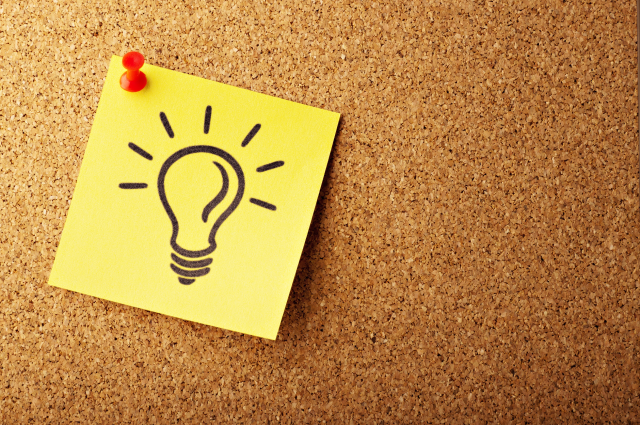Are you like most businesses that prioritize customer acquisition? Getting new customers is crucial, but customer retention drives actual business growth. Customer retention reduces marketing costs, increases customer lifetime value (LTV), and improves your bottom line. While many customer retention strategies exist, they all boil down to optimizing the customer journey. Here’s how you can improve your customer journey to increase customer retention.
Why Should You Focus on Customer Retention?
Customer retention is critical for increasing your marketing ROI, customer loyalty, and business growth. The probability of selling to an existing customer is 60-70%, compared to only 5-20% to a new customer. Retaining customers is 70% cheaper than acquiring new customers. Besides, 51% of existing customers are likely to try new products and spend more money; increasing retention by just 5% can increase profits by over 25%.
All these statistics establish that customer retention should be a priority for businesses. Let’s see how retaining customers enhances your bottom line.
- Reduce Marketing Costs: Since customer retention is cheaper than getting new customers, prioritizing customer retention decreases your marketing costs.
- Generate Repeat Profits: Existing customers are more interested in trying new products, generating recurring revenue and profits.
- Sell at a Premium at Premium Prices: Customers who believe in your brand and products will pay premium prices for your products. In contrast, most brands need to slash their prices to get new customers.
- Obtain Feedback: Getting feedback from customers is valuable. Unfortunately, only 1 in 26 customers give feedback and voice their complaints. Loyal customers are more likely to share their opinions with you, helping you improve your products.
- Word-of-Mouth Advertising: In this era when an average internet user sees hundreds of ads daily, word-of-mouth advertising is rare, and thus, impactful. Repeat customers are more likely to recommend your products to others.
Customer Journey Optimization: The Right Approach to Retaining Customers
Most businesses realize the importance of customer retention. However, they lack the right approach to retain customers. Improving the post-purchase experience is the preferred technique used by most marketers to encourage customers to buy again. Though improving the post-purchase experience is essential, it isn’t enough.
A customer’s journey begins when they see your ad or cold email and become aware of your product. Then why focus on improving the experience after the customer has used your product?
Brands should optimize the entire customer journey. Instead of just improving the post-purchase experience, focus on providing the best experience throughout the customer journey.
Let’s delve into the three levels of a customer’s journey and how to optimize them.
Customer Acquisition
Brands’ customer acquisition strategies play a vital role in defining their customer retention success. First, target the right audience. You should only reach prospects genuinely interested in what you offer, as they are more likely to buy from you again.
The next step is to create a seamless conversion process. An effective conversion process is essential to get repeat customers. Businesses primarily use landing pages and emails to convert customers. Use these tools properly to create a perfect acquisition experience for your customers.
For example, you shouldn’t trick prospects into buying your product by lying on your sales call or landing page. You can trick them once, but customers will buy from you again only if they trust you. Be honest about your product’s value and create a customer relationship based on trust.
Product or Service
The next, inarguably the most important step in optimizing the customer journey, is your product. If your product is fantastic, customers will want to use it again. So, offering the best product experience is a natural, automated, and effective way to retain customers. This also includes offering top-notch service and taking customer feedback seriously.
Post-Purchase Experience and Retention
The final step is to create a positive post-purchase experience for your customer. Stay in touch with your customers, and ask about their experience and feedback. You can also occasionally encourage them to upgrade their product or make another purchase.
The idea is to keep your customers engaged after they buy your product. Channels like email, SMS, and social media are ideal for engaging with your customers after the purchase.
How to Boost Customer Retention Throughout the Customer Journey?
Optimizing the customer journey is the most effective and sustainable way to retain customers. Here are some actionable steps to immediately improve the customer journey and retain more customers.
Develop a Customer Journey Map
Mapping your customer’s journey is the initial step in any customer retention journey. A journey map is a visual representation of your customer’s entire journey, from acquisition to conversion to retention. Creating visual maps gives you a clear idea of how your customers learn about your brand and buy your product. It also helps you identify all the important touchpoints and how customers interact with them.
Gain All Customer Data and Build Retention Segments
To map the customer journey, you need customer data. Gain access to all the data about your customers. You should know about all the touchpoints your customers use, which touchpoints drive the most conversions, and which marketing strategies work the best.
Once you have all the data about your customers, including their transactions and behaviors, the next step is to unify that data into retention-based segments. Divide customers into categories like Loyal, Former, Dormant, etc., and develop engagement strategies for each.
Offer Real-Time Engagement
You’ve successfully convinced a customer to purchase your product. Now what? Let’s move to the next customer.
Many businesses do this, and it’s the incorrect approach, as it ceases engagement with the customer. In this scenario, a customer will use the product and forget about it.
The second approach is to offer real-time engagement based on their actions.
Let’s say you’re a SaaS business providing customer relationship management (CRM) software. Adding milestones to your product will be a good idea. For example, a user gets a free one-month upgrade to a higher plan when they add their first 1,000 customers to their CRM database.
QR codes can be your go-to engagement tool if you sell physical products. Use a reliable QR code generator to create a QR code, put it on your product packaging, and link it to your website, social media, or feedback page. Customers can scan the code with their phones to engage with your brand.
Create a Personalized Relationship
Personalization has reshaped marketing in more ways than you can think of. A one-fits-all approach worked in marketing doesn’t work anymore. Customers are savvy, and they want brands to cater to their requirements. In fact, 80% of customers are likely to buy from a brand that offers personalized experiences.
The core idea of personalization is to see each customer individually instead of looking at them as a group. There are various strategies to personalize the customer experience, such as:
- Developing customer profiles
- Training employees to be customer-oriented
- Giving choices to your customers
- Following up with them regularly and seeking feedback
- Interacting with them on social media
Give Your Customers Reasons to Return
You want your customers to buy from you again. But why should they? Sure, you have a stellar product, and that’s a huge reason to keep using it.
Sadly, that’s not enough. You offer a great product, but so do your competitors. In this competitive era, all providers have top-notch products. So how can you stand out and retain customers?
Here’s where loyalty programs come into the picture. Well-tailored loyalty programs can encourage customers to stick with your brand and even recommend it to others. That’s why there are 3.3 billion loyalty memberships in the US, and 90% of companies have a loyalty program.
Designer Shoe Warehouse, a shoe store company, has a long-run loyalty program. DSW keeps things simple. Customers who are members of the program earn extra rewards points and cash rewards. Several brands like Sephora, Starbucks, The North Face, TOMS, and American Express have loyalty programs.
If you’re new to loyalty programs, follow this guide to get started.
Offer Stellar Service and Take Feedback Seriously
93% of customers will make a repeat purchase with a brand that offers good customer service. Long response times, unempathetic support representatives, and unsatisfactory customer service can damage your brand’s reputation and turn your customers off. On the contrary, offering immediate assistance and omnichannel customer service will encourage customers to buy from you again.
Brands must also take customer feedback seriously and act upon it. When customers give you feedback, it means they want you to improve your product, so they can continue using it. Not addressing the feedback and working on it immediately gives your customers a reason to never buy from you again.
Improve Customer Retention: Wrap Up
Running a business is a marathon, not a sprint. To achieve sustainable growth, you need loyal customers who regularly buy from you and recommend your products to others. Therefore, customer retention and loyalty should be the top priority for brands.
The most effective way to retain customers is to optimize the entire customer journey, from acquisition to post-purchase. The chances of retaining customers increase when you offer them the best experience throughout their journey.
Author Bio
Akshay is a digital marketer and a startup enthusiast exploring the myriad avenues of everything marketing. At Beaconstac, he enables companies to bridge the gap between the physical and digital worlds through the use of custom QR codes.
Akshay Deogiri LinkedIn: https://www.linkedin.com/in/akshaydeogiri/
MobStac LinkedIn: https://www.linkedin.com/company/mobstac
Beaconstac website: https://www.beaconstac.com/
Beaconstac blog: https://blog.beaconstac.com/
Related Reading


